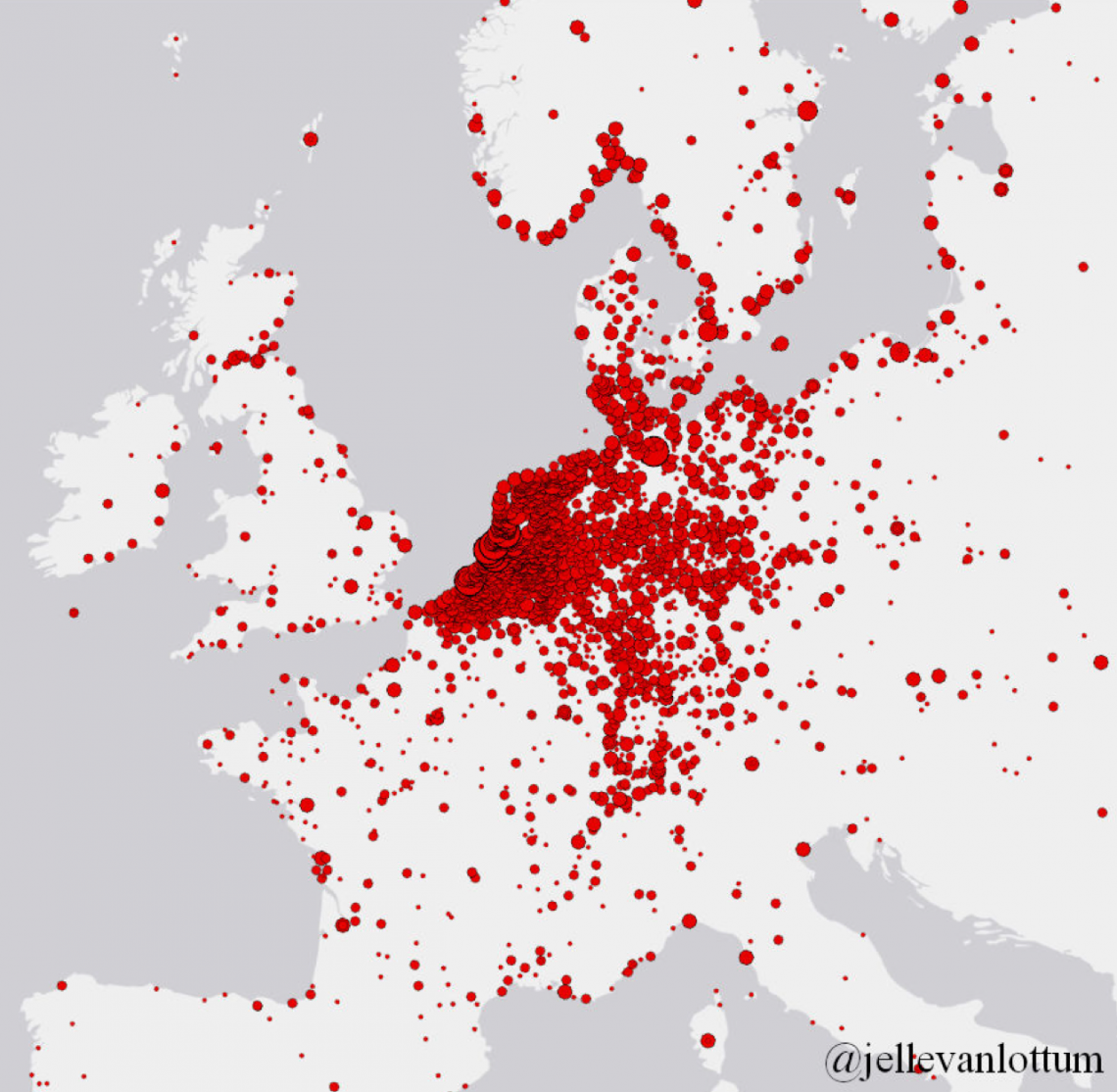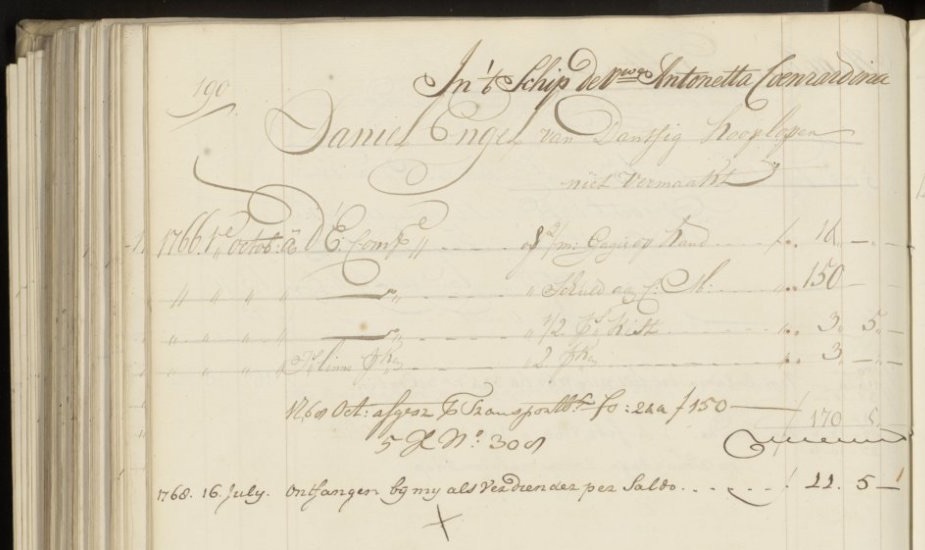-
Daniel Engel: a maritime career reconstructed
Daniel Engel was a young man from ‘Dantsig’ (modern-day Gdańsk in Poland) who travelled to the Dutch Republic in the mid-18th century to apply for a job with the Dutch East India Company (VOC). We’ve written about him before (in this blog post, where we introduced the Company’s pay ledgers, one of our main data sources) and now come back to him once more. Not that Engel is so special–on the contrary, there were thousands of men like him in the ranks of the VOC–but because his story is a good case in point for illustrating our work on reconstructing maritime careers. 1766: first journey to the East Indies A…
-
Presentation at the 2018 World Economic History Congress
Today we presented the paper ‘Maritime careers in the Dutch Republic: some preliminary findings’ at the 2018 World Economic History Congress (WEHC) in Boston MA. It was great to show our findings to an international audience at the session ‘Factor Costs in the Expansion of Pre-Modern Ocean Shipping: Labor, Capital, and Knowledge Transfer, 1300-1700’, organized by Maryanne Kowaleski (Fordham University). Good career opportunities for migrant sailors Based on quantitative analysis of our Dutch East India Company’s sailors’ careers database, we argued that the tightening native labor supply in the 18th-century Dutch Republic necessitated an influx of skilled migrant workers, and that these migrant workers were given equal opportunities compared to…
-
How do we reconstruct sailors’ careers?
We published a paper on our methodology of reconstructing sailors’ careers in the HUMIGEC project. It’s called ‘Small Lives, Big Meanings. Expanding the Scope of Biographical Data through Entity Linkage and Disambiguation’ and was co-authored by Lodewijk Petram, Jelle van Lottum, Rutger van Koert, and Sebastiaan Derks. The paper was originally presented at the 2017 edition of the Biographical Data in a Digital World conference, held in Linz, Austria. The maritime dataset and career reconstruction methodology serve as a use case to introduce the Huygens ING digital biographical data policy.
-
Where the VOC crews came from
The pay ledgers of the Dutch East India Company (VOC) are an important data source for our projects (we tell more about this source in this blog post). The following dynamic heatmaps give a good impression of the regions where the sailors on board of the ships headed for Asia originated. For clarity reasons, crew members from one of the six VOC towns (Amsterdam, Delft, Enkhuizen, Hoorn, Middelburg and Rotterdam) were excluded from these maps.
-
Data: VOC maritime personnel records
Our research on the careers of maritime workers is based on a number of data sources, which we’ll introduce in separate blog posts. First up is a database containing the maritime personnel records of the Dutch East India Company (VOC). In the period 1602-1795, just under 5,000 Dutch East India Company ships sailed from the Dutch Republic to Asia. Each of these kept a pay ledger, in which personal particulars and salary information for all paid crew members were registered. Not all pay ledgers have survived until today, but for the late 17th and, especially, the 18th century, the ledgers give a very good view of the (highly international) workforce of…

